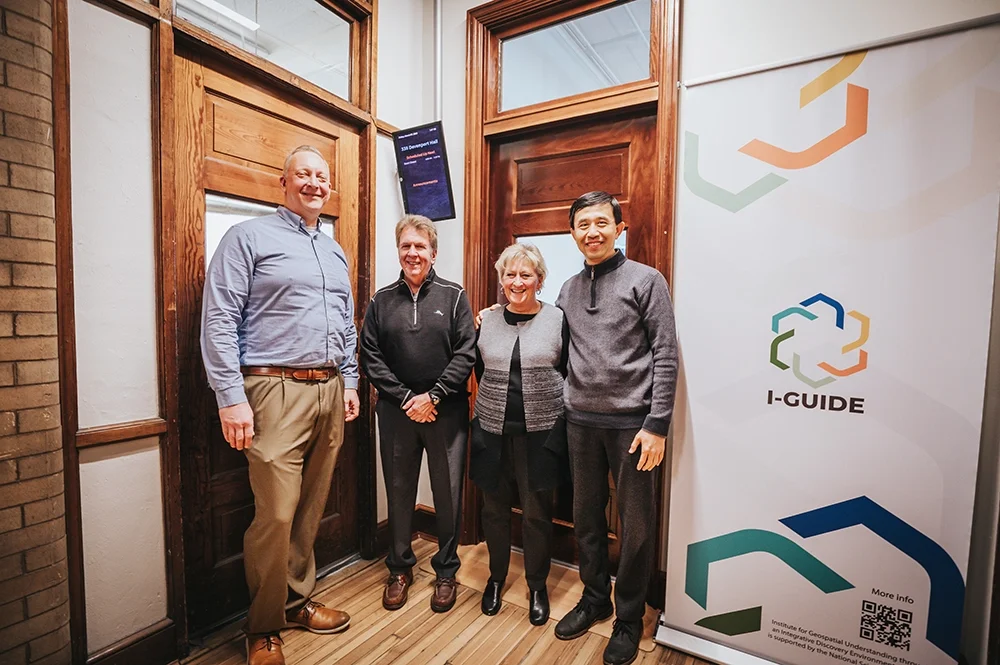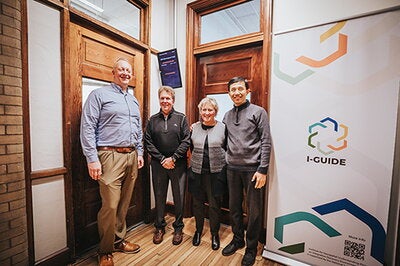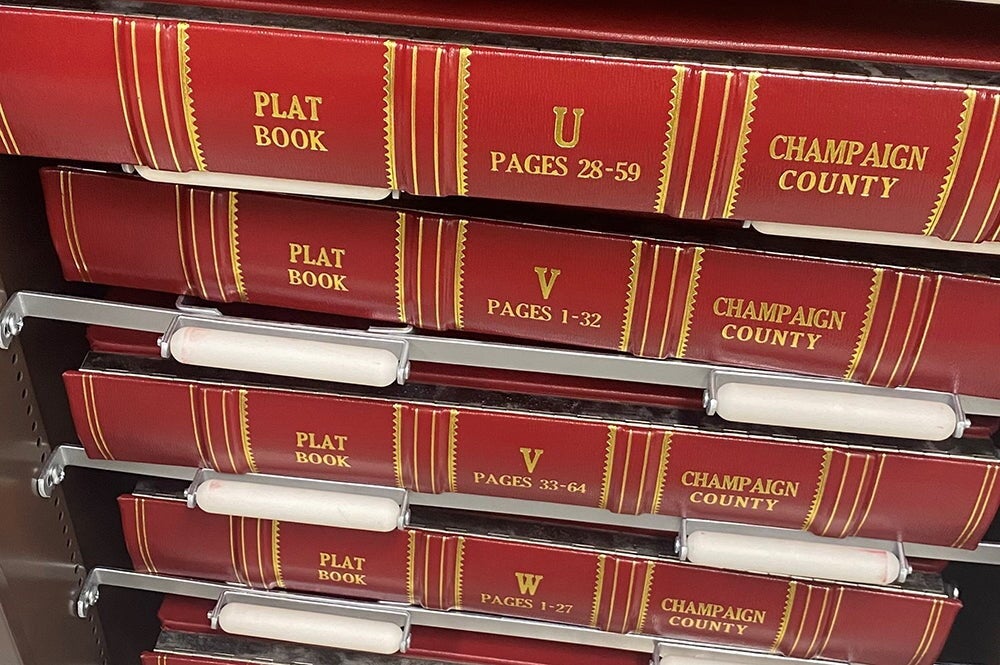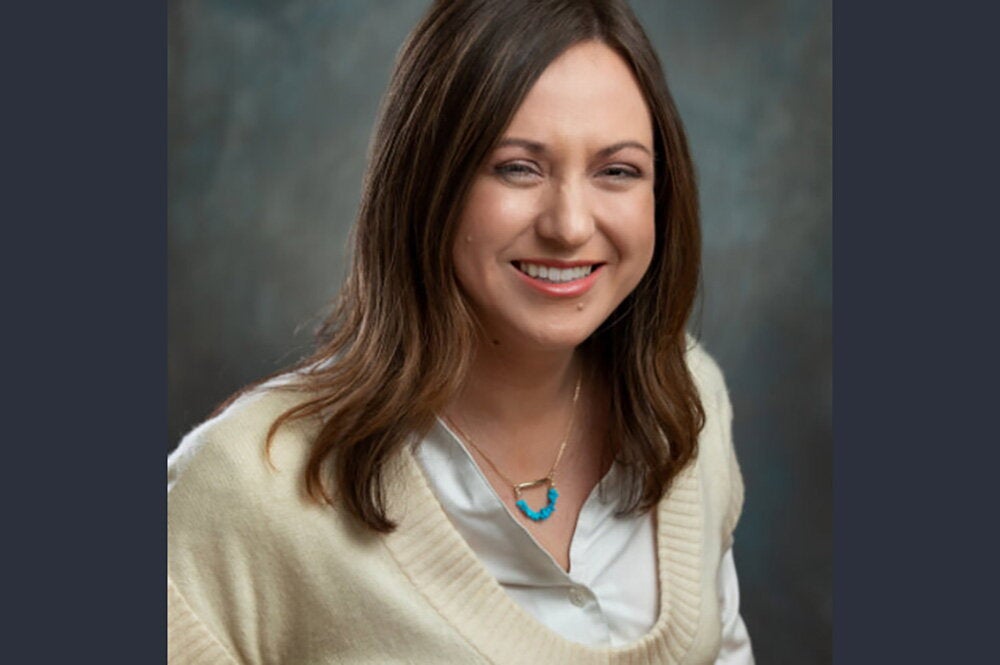

In a discipline devoted to spaces, one of the most significant transformations came recently in Davenport Hall where a little-used room was converted to a new, state-of-the art geospatial laboratory thanks in large part to a generous donation from Candace Penn (BS, ’72, geography; MPA, ’94, Auburn University Graduate Air War College, Maxwell AFB, AL) and James Robert Frame (BS,’73, LAS general curriculum; minor, aviation).
The I-GUIDE Lab, led by Shaowen Wang, professor of geography and geographic information science and computer science and founding director of the CyberGIS Center for Advanced Digital and Spatial Studies (CyberGIS Center), seeks to better understand the risks and impacts of extreme events and disasters. Wang is also associate dean for natural and mathematical sciences in the College of LAS.
Candace Frame started her career as a cartographer for the U.S. government’s Defense Mapping Agency which was changed after 9/11 to the National Geospatial-Intelligence Agency (NGA), merging the mapping and imagery communities. As one of the few women in her field at the time, she helped pave the way for future female geospatial scientists in the country.
“Candy’s expertise in geospatial mapping and her leadership experience inspire us to think boldly about uniting diverse fields to develop collaborative solutions to real-world problems, while also enriching students’ experiences by providing access to cutting-edge technologies and world-class collaboration opportunities,” Wang said.
Frame’s career involved creating maps and using satellite imagery tailored to the needs of all branches of the U.S. military operating across the globe. While much of this work is now automated, Frame began working in an earlier era where detailed maps of places not normally open to the U.S., such as North Korea and the Middle East, were harder to obtain.
“Our mission was really important,” Frame explained. “I’ll never forget the warning by an instructor in my initial training who said, ‘You must ensure you are doing your highest quality of work because whatever you do might save somebody’s life.’”
One of the most intense moments of her career, for example, was when Frame helped create sensitive maps for the attempted covert rescue of Americans held hostage in Iran in 1980. Working around the clock with her team, she recalled tailoring the maps to the operation with limited information of the area. Tragically, the rescue failed due to environmental issues.
NGA also played a central role in the raid that killed Osama bin Laden, providing the crucial geospatial intelligence used to locate and plan the operation against his compound in Pakistan. “We created maps, interpreted satellite and drone imagery, and built a physical model of the compound to aid decision-makers in planning,” Frame said.
Now retired, Frame gives back to those who helped her develop her career. When she learned that the department where she got her degree wanted to put the I-GUIDE Lab in Davenport Hall where she had many classes, she felt that it was a perfect opportunity to help. “I thought, ‘This is something that I can see, feel, and touch.’ I could watch the renovation process, and see the students eventually using it,” Frame said. “It made me feel really good to see what my funds might be used for.”
The project received an institute grant from the National Science Foundation’s Harnessing the Data Revolution initiative, which, when combined with the gift from Frame and her husband, was enough to build a new home for I-GUIDE (it was located previously in the Natural History Building). The new space allows for much more on-site research and collaboration.
“Transforming the old, abandoned soils lab into the I-GUIDE Lab was both a challenge and a deeply rewarding journey. In the beginning, it was just an empty, forgotten space,” Wang remembered. “But as we started reimagining it, the vision of a vibrant, dynamic hub for geospatial AI and data science began to take shape. Witnessing the I-GUIDE Lab’s transformation into a state-of-the-art facility—where researchers, students, staff, and collaborators now come together to work on real-world sustainability and resilience challenges—has been incredible.”
Wang and Frame anticipate that the I-GUIDE laboratory will be home to groundbreaking progress in the world of geospatial data—producing the same feeling of excitement that Frame has felt throughout her studies and career, she said.
“I hope this lab provides the technology, the skills, and the ideas for problem-solving to students so that they can find their career track, just like I did,” Frame said. “That excites me, to give these students a path to a career that's really meaningful.”


